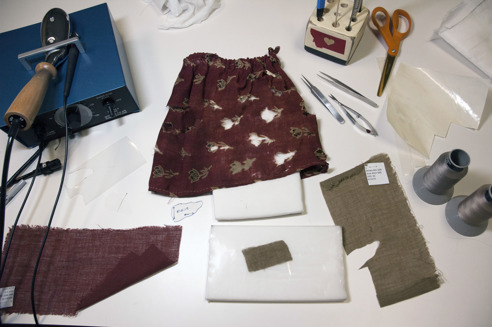- Events & Programs Home
- Calendar
- Accessibility
- Adults
-
Families & Teens
- Families & Teens Home
- 10x10 Teen Art Expo
- Art on the Rise
- Art Together: Art Making for Families with Children Ages 3–5
- Babies Sing with May Festival Minis
- Boy Scouts / Girl Scouts
- CAM Kids Day
- Family Storytime and Gallery Walk
- Family Studio: Art Making for Families with Children Ages 6–12
- Games in the Galleries
- Members-Only Baby Tours
- Public Baby Tours
- REC Reads
- Rosenthal Education Center (REC)
- Saturday Morning Art Class
- See Play Learn Kits
- Summer Camp
- Teen Fest: Zine and Comic Exchange
- RECreate
- Teachers
- Community Outreach
- Fundraisers
- Plan Your Own Event

- Events & Programs Home
- Calendar
- Accessibility
- Adults
-
Families & Teens
- Families & Teens Home
- 10x10 Teen Art Expo
- Art on the Rise
- Art Together: Art Making for Families with Children Ages 3–5
- Babies Sing with May Festival Minis
- Boy Scouts / Girl Scouts
- CAM Kids Day
- Family Storytime and Gallery Walk
- Family Studio: Art Making for Families with Children Ages 6–12
- Games in the Galleries
- Members-Only Baby Tours
- Public Baby Tours
- REC Reads
- Rosenthal Education Center (REC)
- Saturday Morning Art Class
- See Play Learn Kits
- Summer Camp
- Teen Fest: Zine and Comic Exchange
- RECreate
- Teachers
- Community Outreach
- Fundraisers
- Plan Your Own Event
Blog: CAM Uncovered
Blog: CAM Uncovered
- Home
- Plan Your Visit
- Art
-
Events & Programs
- Events & Programs Home
- Calendar
- Accessibility
- Adults
-
Families & Teens
- Families & Teens Home
- 10x10 Teen Art Expo
- Art on the Rise
- Art Together: Art Making for Families with Children Ages 3–5
- Babies Sing with May Festival Minis
- Boy Scouts / Girl Scouts
- CAM Kids Day
- Family Storytime and Gallery Walk
- Family Studio: Art Making for Families with Children Ages 6–12
- Games in the Galleries
- Members-Only Baby Tours
- Public Baby Tours
- REC Reads
- Rosenthal Education Center (REC)
- Saturday Morning Art Class
- See Play Learn Kits
- Summer Camp
- Teen Fest: Zine and Comic Exchange
- RECreate
- Teachers
- Community Outreach
- Fundraisers
- Plan Your Own Event
- Give & Join
- About
- Tickets
- Calendar
- Exhibitions
- Collections
- Blog
- Shop
Behind the Scenes in Conservation: African Doll
by Conservation
1/19/2017
behind the scenes , conservation , textile conservation , African Art Gallery , conservation lab

What is it like to be a textile conservator? This “conservator’s-eye-view” shows a glimpse into life in the textile conservation lab, where this week our textile conservator is repairing a cotton skirt that belongs to a ceremonial African doll. The doll’s cotton calico skirt (the red textile in the center of the workbench) has been damaged by the dye used to print the dark brown flowers: the dye weakened the fibers so much that many of the printed flowers have fallen out of the skirt, leaving unsightly and vulnerable holes. You can see the flower-shape of the holes where the white workboard is behind them. Appropriate fabric has been dyed to match and patches are being attached to mimic the design where it has been lost and to fill in the skirt so it looks complete. The light brown fabric will form the missing flower print and the red fabric will form the missing ground. Look for one light brown patch already in place. The blue box on the left is a control unit for the heated spatulas (sitting on top of it) that are used to activate a conservation adhesive (which is in sheets like the scrap of one on the right) being used to hold the patches in place. Bits of mylar (used to make patterns of the patches to be cut) and other tools of the textile conservator’s trade are nearby. Come see the doll, newly installed in the African gallery!
Image Credit: Doll, Late 19th Century-Early 20th Century, Sudan, wood, mud, resin, cotton, yarns, glass beads, coins, buttons, bells, metal, coral, Cincinnati Art Museum, Gift of Mrs. Charles Fleischmann and Mrs. Julius Fleischmann, 1911.1760.
Cincinnati, OH 45202
Toll Free: 1 (877) 472-4226
Museum Hours
Museum Shop
Terrace Café
Library
Cincinnati Art Museum is supported by the tens of thousands of people who give generously to the annual ArtsWave Campaign, the region's primary source for arts funding.

Free general admission to the Cincinnati Art Museum is made possible by a gift from the Rosenthal Family Foundation. Exhibition pricing may vary. Parking at the Cincinnati Art Museum is free.
Generous support for our extended Thursday hours is provided by Art Bridges Foundation’s Access for All program.

General operating support provided by:



